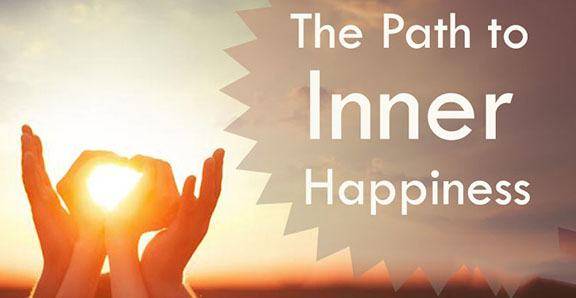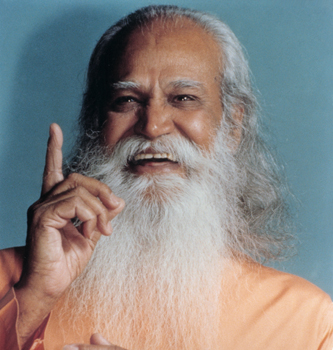 The teachings of Raja Yoga are a golden key to unlock all health, happiness, peace, and joy. Everyone, everything, in the creation wants to be happy. If you put a plant in the shade, its leaves will turn toward the sun, because the plant wants to be happy. Place a worm in the sun, it will crawl into the shade for the same reason. Ask a thief, “Why are you robbing the bank?” and he will no doubt reply, “Because if I have more money, I’ll be happy.” And if you ask the policeman why he is pursuing the thief, he will tell you, “My duty is to catch the thief, and when I do my duty, I’m happy.” So, everyone is seeking happiness. The problem is that not everyone knows where or how to find it.
The teachings of Raja Yoga are a golden key to unlock all health, happiness, peace, and joy. Everyone, everything, in the creation wants to be happy. If you put a plant in the shade, its leaves will turn toward the sun, because the plant wants to be happy. Place a worm in the sun, it will crawl into the shade for the same reason. Ask a thief, “Why are you robbing the bank?” and he will no doubt reply, “Because if I have more money, I’ll be happy.” And if you ask the policeman why he is pursuing the thief, he will tell you, “My duty is to catch the thief, and when I do my duty, I’m happy.” So, everyone is seeking happiness. The problem is that not everyone knows where or how to find it.
Some people want to be happy quickly, so they take short cuts and get temporary happiness. But borrowed joy comes and goes. The happiness that we seem to be getting by our daily efforts is fleeting and mixed with a lot of troubles, worries, and unhappiness. Happiness cannot come without unhappiness before and after. We keep trying to find that happiness and missing it. When we finally tire of searching for happiness outside, we sit quietly and wonder, “What is this? Why am I unhappy? Why do I lose the happiness that I have?” If we’re sincere and analyze well, we find, ultimately, that happiness never comes from outside.
You never get happiness by doing something or achieving something. Even God cannot give you happiness. If He gives, He might take away. Anything that comes, will go. Happiness is not to be sought outside. It can never come from outside—or from inside. It can’t come, because it simply is. It is always. Where? Everywhere.
You are Happiness personified. You are that Supreme Bliss. You are that Joy. You are the image of happiness. If you want to use the word God, who is God? What are His qualifications? Always being happy. So, as the image of God, how can you be unhappy?
You may wonder, “If that is so, why don’t I always experience that happiness?” The reason is that you have forgotten it. That’s why you are running after happiness. The basic ignorance is to forget your true nature and to look for happiness in external ways.
To understand your true nature, the mind must be quiet; otherwise it seems to distort the truth. This is easy to understand through an analogy. You are the Seer who wants to see itself. Just like in the case of your physical face, to see your Self, you need a mirror. The mind is the mirror. The Self is reflected on the mirror of the mind. If the mirror gets distorted or disturbed, you see a disturbed image. You identify with the image and feel that you are disturbed. So, even though the true you, the Self, is always the same, you appear to be distorted or mixed up with the mind. The aim of Raja Yoga is to make the mind clean and calm. When that is achieved, you feel that you have gone back, or you appear to have gone back, to your original state. You see a steady image and experience the Peace and Joy that is your true nature.
Raja Yoga is a practical guide for gaining control over the mind. The second sutra states, “Yogas chitta vritti nirodhah,” or, “The restraint of the modifications of the mind-stuff is Yoga.” Every thought, feeling, perception, or memory you may have causes a modification, or ripple, in the mind. It distorts and colors the mental mirror. If you can restrain the mind from forming into modifications, there will be no distortion, and you will experience your true Self.
It requires great insight, patience, and skill to attain this goal. The mind is the most powerful force in all creation, and you are trying to understand and gain mastery over it. To accomplish this great task, Raja Yoga offers a very broad approach that takes into consideration all aspects of the individual—physical, emotional, mental, intellectual, and spiritual. In so doing, it presents the essence of all the other branches of Yoga (Hatha Yoga, Karma Yoga, Bhakti Yoga, and Jnana Yoga). In this light, our own Integral Yoga, which is a synthesis of the various branches of Yoga aimed at perfecting all aspects of the individual and gaining mastery over the mind, is Raja Yoga.
The Yoga Sutras date somewhere between 5000 BC and 300 AD. The compiler of the Sutras and Father of Yoga, Sri Patanjali Maharishi, presented the ancient teachings of Yoga in a systematic way that could be well utilized by his students. As he spoke, his students took notes, which later came to be called the sutras. Sutra means “thread,” and the sutras are just combinations of words threaded together—sometimes not even complete sentences. Through the centuries, many great sages and scholars have added their commentaries to the sutras, and these can be studied today to deepen and enrich our understanding of them.
The Yoga Sutras of Patanjali is the first and foremost scripture of Yoga. Within two hundred sutras, it gives the complete system of Yoga, including its aim, the practices, obstacles along the way, how to overcome them, and the results one could achieve. In just a handful of words, it presents the complete philosophy and psychology of Yoga in a very practical and systematic way. It’s a recipe book, and to get the benefit, you have to follow the directions, cook well, and eat. Only then will your hunger be satisfied.
May the blessings of Sri Patanjali and all the great sages and saints guide you in your study and practice, so that you may realize the great benefits and share them with one and all.
Om Shanti Shanti Shanti.


